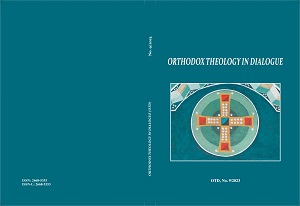THE BEGINNINGS OF THE COMMUNIST DICTATORIAL REGIME IN ROMANIA. THE STATUS OF THE ROMANIAN ORTHODOX CHURCH (1945-1947)
THE BEGINNINGS OF THE COMMUNIST DICTATORIAL REGIME IN ROMANIA. THE STATUS OF THE ROMANIAN ORTHODOX CHURCH (1945-1947)
Author(s): SERGIU-GRIGORE POPESCUSubject(s): Political history, Recent History (1900 till today), WW II and following years (1940 - 1949), History of Communism, Eastern Orthodoxy, History of Religion
Published by: MITROPOLIA OLTENIEI
Keywords: Romania; communist regime; dictatorship; Romanian Orthodox Church; clergy;
Summary/Abstract: On February 27, 1945, the Deputy Commissar for Foreign Affairs of the U.S.S.R., Andrei Ianuarievici Vâșinski, asked King Mihai I of Romania (1921-2017) to immediately dismiss the government led by General Nicolae Radescu and appoint Petru Groza, one of the leaders of the Communist Party, as Prime Minister of Romania. In order to forestall any trace of disobedience from the Romanian authorities, the Soviets ordered the demobilization and disarmament of numerous units of aviation, artillery, infantry, police, and firefighters in Bucharest. All firearms were placed under Soviet custody. In vain were the protests of the Romanian General Staff, which showed that "disarmament has the most serious consequences on the morale of the entire population, as well as the Romanian army, which cannot be subjected to such contradictory treatment, namely: on the front, Romania is a comrade in battle whose joint efforts are required, and on its territory, the object of capture, disarmament, and vexation." In addition to Russian tanks and patrols, 4.000 N.K.V.D. agents were also sent to the capital of Romania. (the future K.G.B.), their mission was the complete neutralization and disarmament of all Romanian defense units and the imposition by force of a communist totalitarian regime following the Russian (Soviet) model. Between 1945-1947, the early years of the communist dictatorship in Romania, the Romanian Orthodox Church was among the institutions that enjoyed "special attention" from the new regime. Atheists, according to the political doctrine they had embraced, the Romanian communists of this period drew up the coordinates of State-Church relationships that would define Romanian Orthodoxy for 45 years. In just a few years, about twothirds of the Romanian Orthodox hierarchs in office at the time of the establishment of the communist regime were forced to retire or resign. The removal of the hierarchs was considered undesirable. The appointment of obedient people in the Orthodox dioceses became a priority for the communist regime after taking power. However, the pressures would intensify at the beginning of 1946, when Patriarch Nicodim initiated a series of meetings with Roman Catholic prelates, meetings that indicated a possible orientation of the Romanian Orthodox Church towards the West and a separation from the Russian Orthodox Church. In the years to come, thousands of priests, church singers, theological students, monks, and nuns will be arrested and sent to re-education camps, tortured, and killed because they did not want to collaborate with the communist authorities, continuing to think freely and, unacceptable for a dictatorial regime, to abuses and injustices of any kind.
Journal: ORTHODOX THEOLOGY IN DIALOGUE
- Issue Year: 9/2023
- Issue No: 9
- Page Range: 173-193
- Page Count: 21
- Language: English

